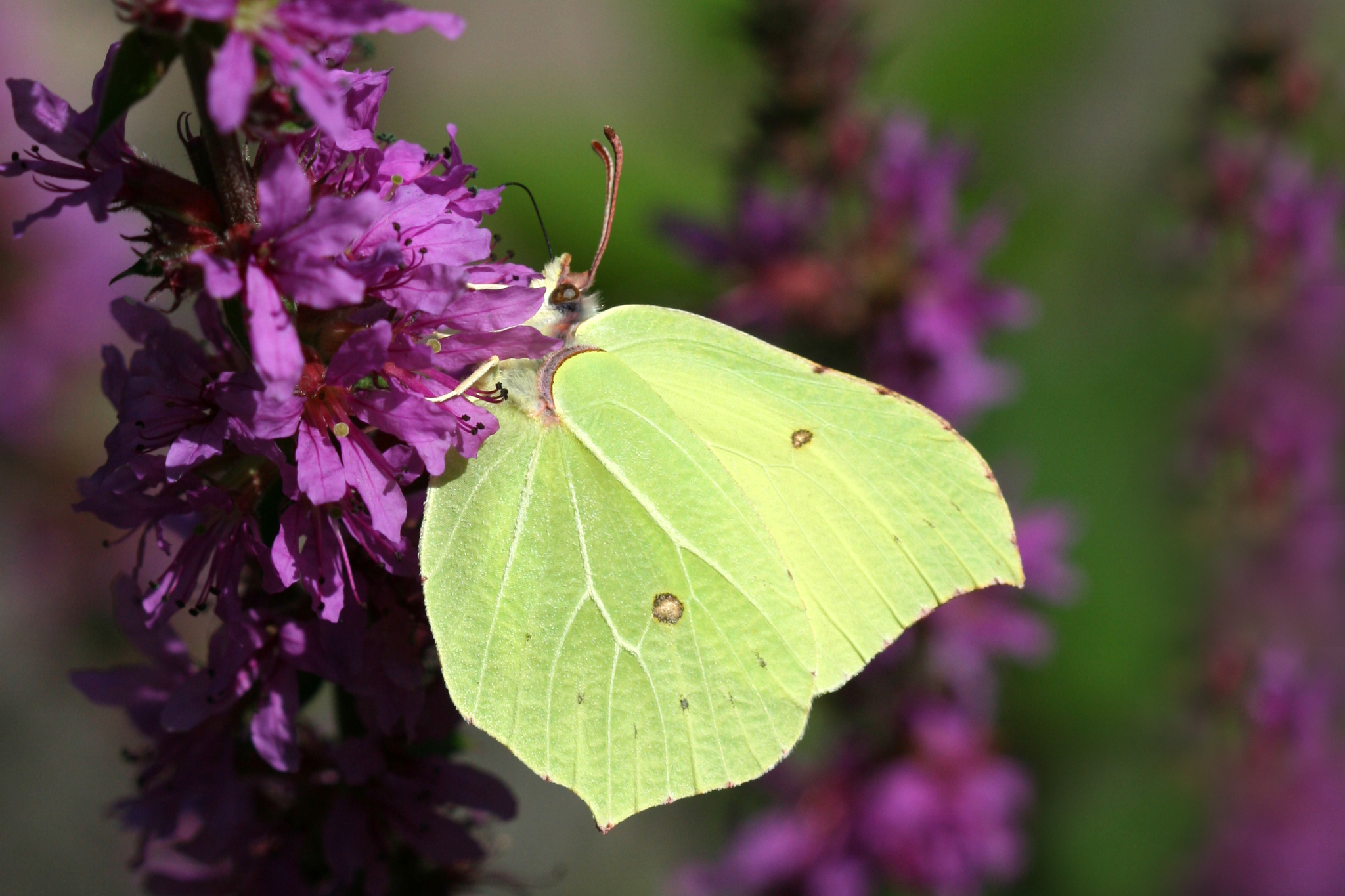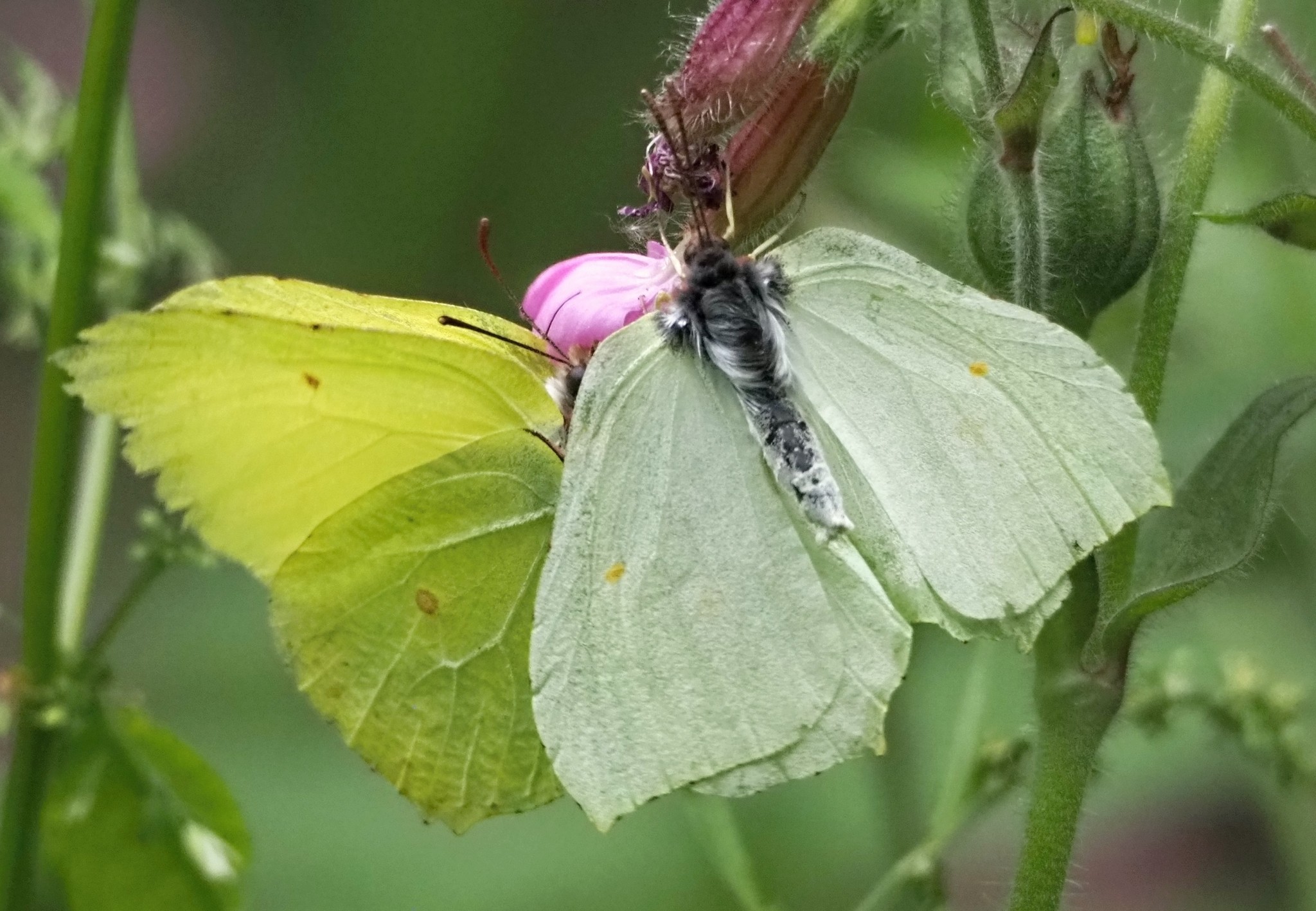Brimstone butterflies
Spring is almost upon us, and I am looking forward to my first sight of an animal emerging from its winter hibernation, spent deep in ivy or other evergreen shrubs.
I speak of the male Brimstone butterfly whose startlingly conspicuous bright yellow wings have earned it the reputation as a “harbinger of spring”. He will busy himself feeding on nectar and setting up a territory with patrol lines, awaiting the arrival of a female to attract.

Male Brimstone (credit Didier)
About 2 weeks after the male, the pale-yellow/green female Brimstone emerges from hibernation. After eventually deciding upon a suitable male with whom to mate, she will search far and wide in search of a ‘larval foodplant’ upon which to lay her eggs – in her case, Common Buckthorn, or, on the Thames Basin Heathlands, Alder Buckthorn, upon which, after hatching from the eggs, the caterpillars feed on the leaves.

Male & female Brimstone (credit bsteer)
The males and females, having created the next generation, will continue to fly and feed, very often until summer; but, without exception, all will have died by mid-July when their offspring emerge from their chrysalid stage.
Think about this for a moment…
Those males and females, having hibernated over winter, had themselves emerged from their own chrysalid stage during the previous year’s July. This means that, in its adult stage for very nearly one full year, the Brimstone is Britain’s longest-lived butterfly!
Warden Mike
Thames Basin Heaths Partnership

#PawsOnPathsPlease
